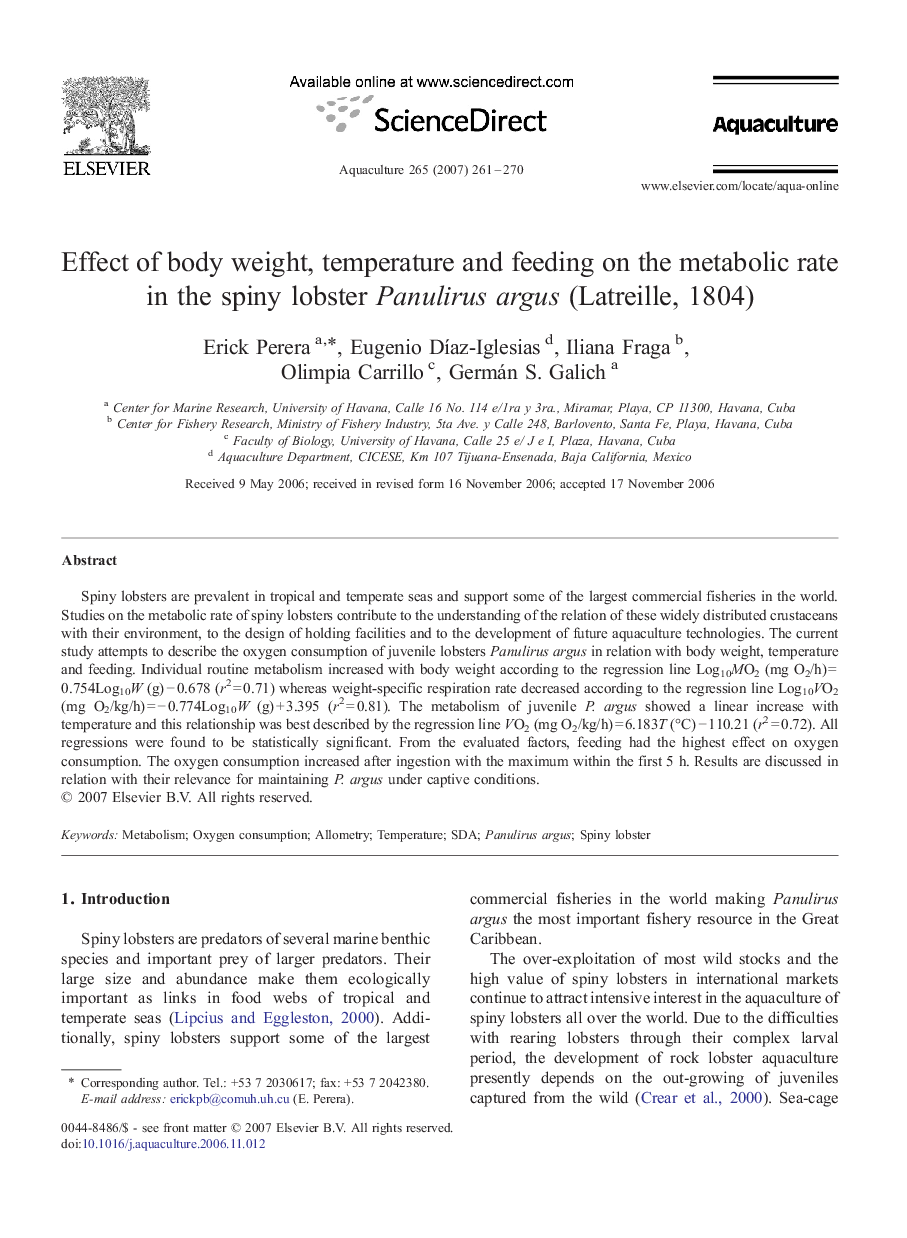| Article ID | Journal | Published Year | Pages | File Type |
|---|---|---|---|---|
| 2425632 | Aquaculture | 2007 | 10 Pages |
Spiny lobsters are prevalent in tropical and temperate seas and support some of the largest commercial fisheries in the world. Studies on the metabolic rate of spiny lobsters contribute to the understanding of the relation of these widely distributed crustaceans with their environment, to the design of holding facilities and to the development of future aquaculture technologies. The current study attempts to describe the oxygen consumption of juvenile lobsters Panulirus argus in relation with body weight, temperature and feeding. Individual routine metabolism increased with body weight according to the regression line Log10MO2 (mg O2/h) = 0.754Log10W (g) − 0.678 (r2 = 0.71) whereas weight-specific respiration rate decreased according to the regression line Log10VO2 (mg O2/kg/h) = − 0.774Log10W (g) + 3.395 (r2 = 0.81). The metabolism of juvenile P. argus showed a linear increase with temperature and this relationship was best described by the regression line VO2 (mg O2/kg/h) = 6.183T (°C) − 110.21 (r2 = 0.72). All regressions were found to be statistically significant. From the evaluated factors, feeding had the highest effect on oxygen consumption. The oxygen consumption increased after ingestion with the maximum within the first 5 h. Results are discussed in relation with their relevance for maintaining P. argus under captive conditions.
